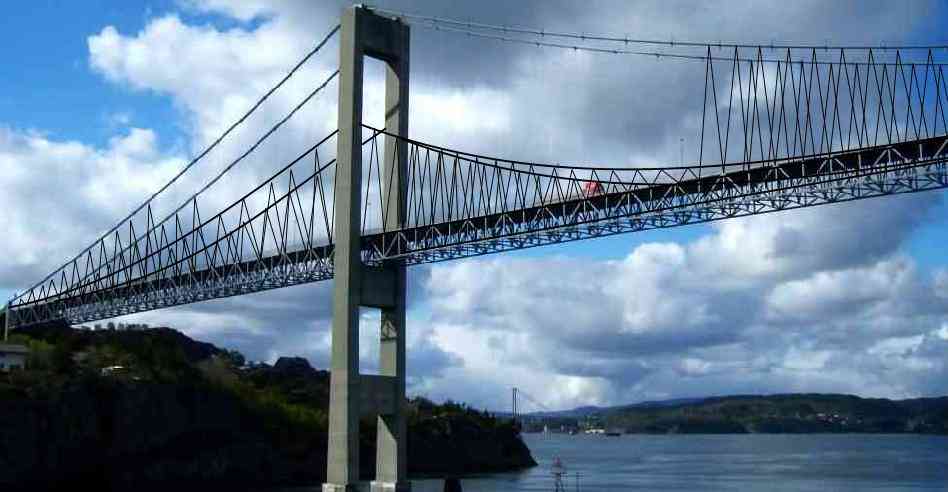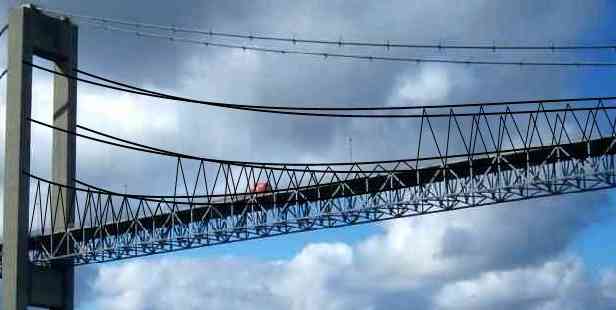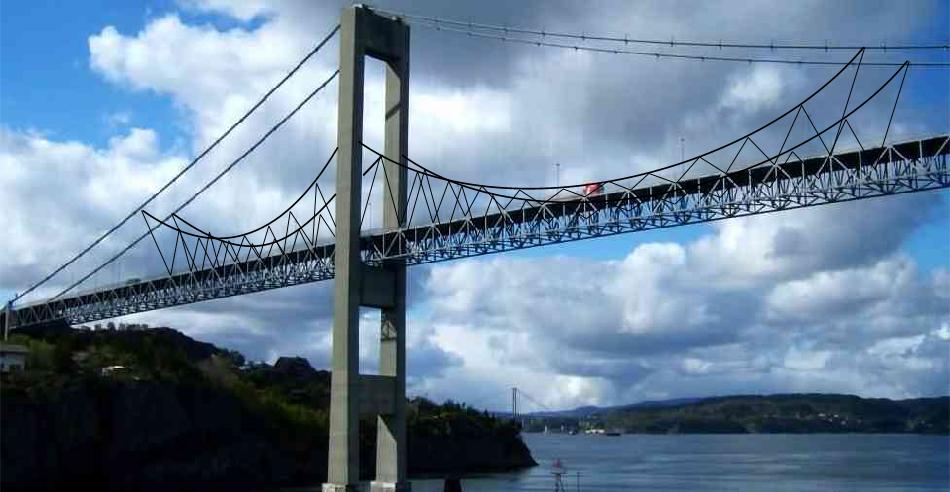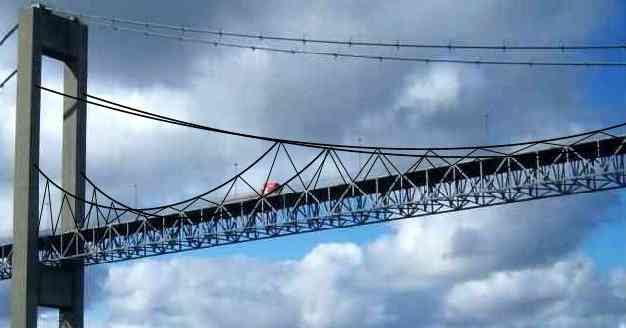Hybrid origins
I originally developed the idea of a
suspension/cable-stayed hybrid bridge by
modifying a suspension bridge.
This page preserves some of my workings.
While I'm an amateur bridge designer, I can't seem to shake
my conviction that the professional designers have somehow
got themselves stuck in a traditional rut - and are probably
wasting millions of taxpayers dollars in the process.
More catenary cables
Here the idea is fairly simple: use additional caternary
cables near the towers, to reduce the height the vertical
suspension cables need to traverse.

More catenary cables
|
This idea keeps the catenary cable near to the body of the
bridge.
That saves a considerable length of vertical suspension
cable.
Some of the weight of the body of the bridge is supported by
the cable that reaches the tower near its base. This weight
no longer has to be supported by the upper part of the tower
- which can consequently be made lighter and more cheaply.
The base of the tower is already likely to be very strong -
and is probably already very well positioned to sustain this
force.
The upper catenary cable no longer has to bear the entire
weight of the bridge - since the regions near the towers
have their weight borne directly by other cables.
Keeping the catenary cable close to the bridge's horizontal
member results in greater stabilising forces against lateral
perturbations.
This design reduces the extent to which the bridge acts like an
aeolean harp - and minimises wind resistance.
The shorter cables have higher notes assocaited with them -
and higher frequencies are more easily damped and are less
likely to result in vibrations.
The lower catenary cable need only carry a small fraction of
the weight of the main catenary cable - and can thus be made
of lighter and cheaper stuff.
The cost of the additional catenary cables is likely to be
greatly outweighed by the cost of all the vertical
cables that are no longer needed, the cheaper towers, and
thinner catenary cables that can be used.
The lower catenary cables should extend right across the
entire length of the bridge. There is likely to be a section in the
middle of the bridge where they run for some distance
horizontal, level with the roadway. That is fine.
Application of the strategy described here can be expected to
reduce both the weight and cost of large suspension bridges
- allowing them to more easily attain larger spans.
Even more catenary cables
The above idea can be applied "recursively" - closer and
closer to the towers.

Even more catenary cables
|
Some even earlier pictures follow:

More catenary cables
|

Even more catenary cables
|
|